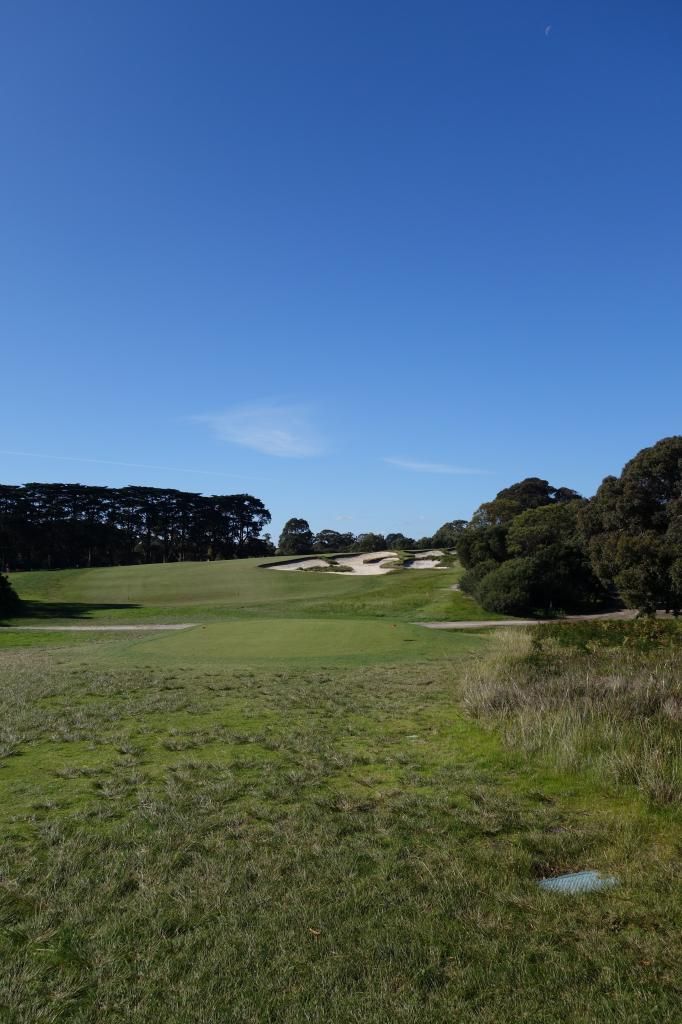After two days of glorious golf at Barnbougle (I will be posting reviews/photo tours of both Barnbougle courses soon), we arrived in Melbourne hungry for more, but dubious as to whether anything could surpass the otherworldly experience--replete with surviving what locals called the worst weather in Tasmanian history--we had just had. My doubts were quickly put to rest, as my very first morning on the mainland came with the treat of all treats: a round with a member, who quickly became and remains a very good friend, at the famed West Course at Royal Melbourne Golf Club, beneath a clear blue sky. As I mentioned in my review of the East Course, the club takes its place in the game seriously, and that showed immediately when we made our way to the driving range. All around us were hordes of junior golfers, who were spending the day at the club to practice and play. Even if this was just another example of Australia's well-documented (and envied) government-backed athletics programs, it was refreshing to see it play out at a course of such stature as Royal Melbourne. I know Augusta National has done much for the game and its future, especially with its recent initiatives (amateur championships abroad and the drive, chip, and putt championship onsite), but I wonder why other prominent courses in America don't do what Royal Melbourne appears to do on a regular basis. It was refreshing to see, and a great way to start the day.
Royal Melbourne Golf Club (West Course)The West Course itself, which I happened to play well with the exception of a few holes, is beautiful, playable, and strategic. Perhaps its greatest strategic merit is that its playability lulls the better player into thinking he can be aggressive, only to have him realize quickly that aggression bites hard at Royal Melbourne. As many have said before, the use of trees at Royal Melbourne (as at most of the Sandbelt courses) is brilliant: There are many of them, and they serve the purpose of visually framing/defining playing corridors (and blocking out signs of civilization beyond a course's borders), but they don't come into play. And what playing corridors they are--grand, sweeping, open yet defined. Strolling the fairways, the golfer gets the feeling of walking through a grand, endless museum (think "Russian Ark") with the roof off.
There are world-class holes aplenty (2, 3, 4, 5, 6, 7, 10, 11, 16, 17, 18), and the ones that don't make that list are still very good (with the uphill par-4 9th, the rolling par-5 12th, and the gentle dogleg-right short par-4 14th being particularly underrated in my opinion). The first hole, which is probably among the four "worst" holes on the course, was likely designed as a comfortable rhythm-building starter; though long, its incredibly wide fairway and relatively flat, defenseless green gets the round underway in a carefree manner. Good thing, too, because the next six holes comprise the longest sustained stretch of brilliance--replete with two world-class par-5s (2 and 4), two world-class par-4s (3 and 6), and two world-class par-3s (5 and 7), with each pair playing very differently--I have come across on a course to date. After a hole-and-half respite (all of 8 and the tee shot on 9), things ratchet up again with the difficult uphill approach to 9 green and the all-world short uphill 10th. Eleven and 12 keep things going, but as you can see from the above enumeration of world-class holes, the middle of the back nine is the weakest stretch on the course. Thankfully, starting with the flat, yet stunning, par-3 16th (on the heels of the course's weakest hole, the straightaway par-4 15th with housing down the left), the course reclaims its grandeur and finishes with a bang. The tee shot on 17 is somewhat dull, but what a second shot (downhill to the left), and what a green complex (bunkers only on the right side). The 18th, as I mentioned in my review of the East course, is architecturally a better closer than the East's 18th, but the view of the driving range to the left, and the absence of a clubhouse view, makes it seem slightly less momentous. Still, the tee shot (over a hill guarded by bunkers, sloping hard left but curving hard right) and approach shot (downhill to a wide and shallow well-bunkered green) marry what is best about the West course. Everyone should try to experience Royal Melbourne (preferably both courses) at some point in life.
Again, because I played the West Course with a member, I did not spend as much time as I usually do taking pictures. This will be more of a mini-tour, then, but I hope you enjoy it regardless.
Royal Melbourne (West), Hole 1 (green, looking backward from the East's 18th tee; the 1st fairway is to the right, the 2nd hole is in the middle, and the 4th hole is to the left)
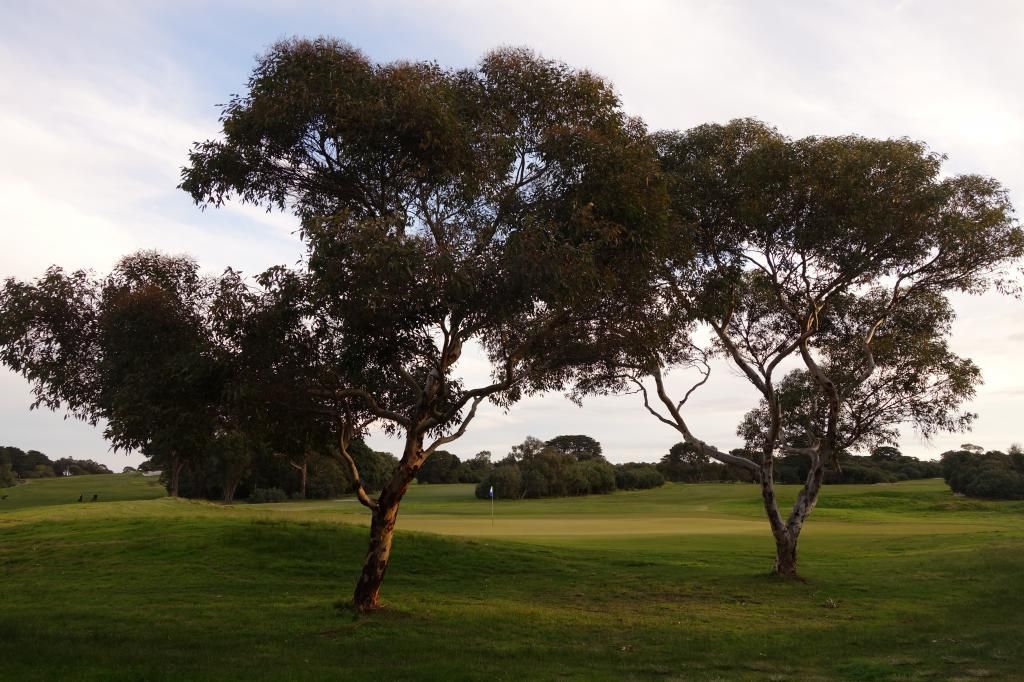
Royal Melbourne (West), Hole 2 (fairway) [N.B.: The green complex, which has a false front/ridge, looks and plays a lot like the green complex at Kingston Heath's 7th, also a par-5.]
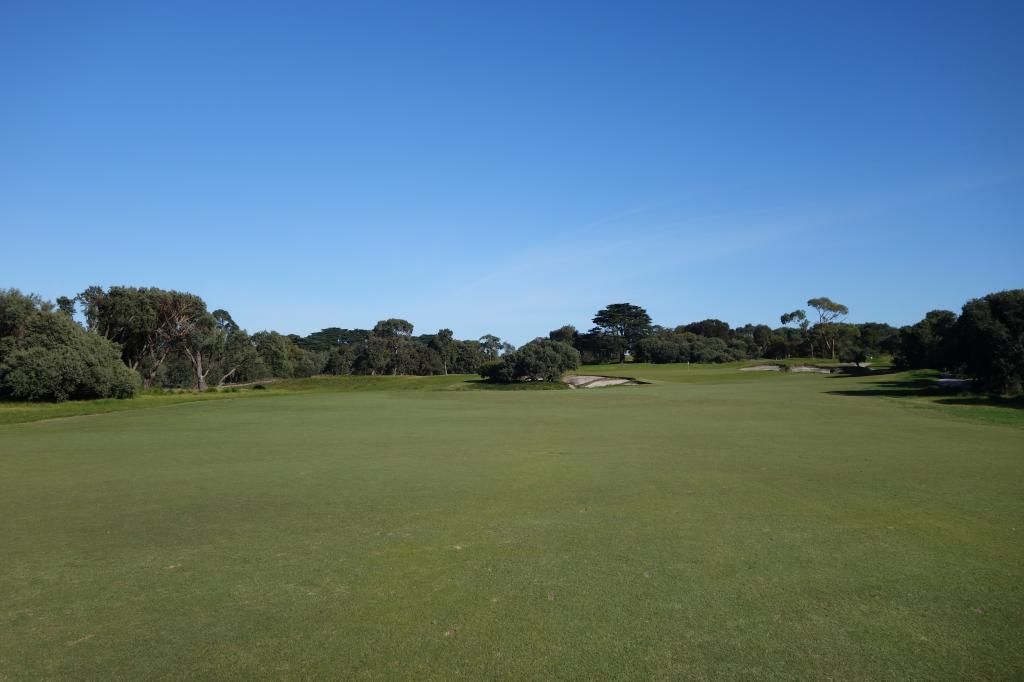
Royal Melbourne (West), Hole 2 (green, left greenside bunker; note the green's false front (darker shade of green) on the right)
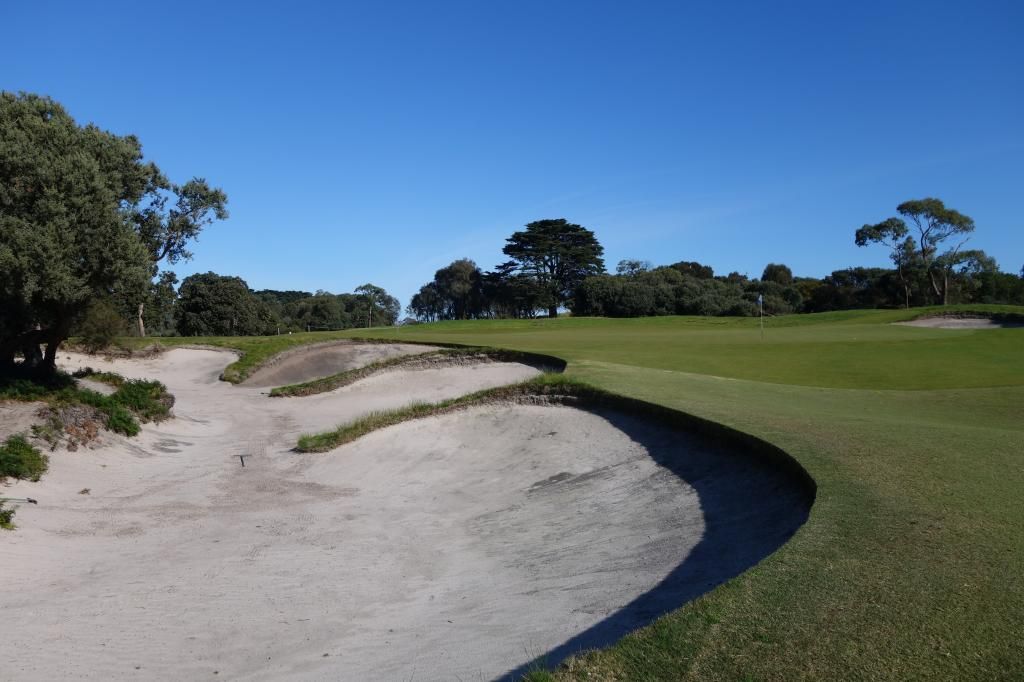
Royal Melbourne (West), Hole 4 (tee)

Royal Melbourne (West), Hole 4 (center fairway bunker at top of hill)

Royal Melbourne (West), Hole 4 (fairway, past the center fairway bunker/top of the hill)

Royal Melbourne (West), Hole 5 (tee)
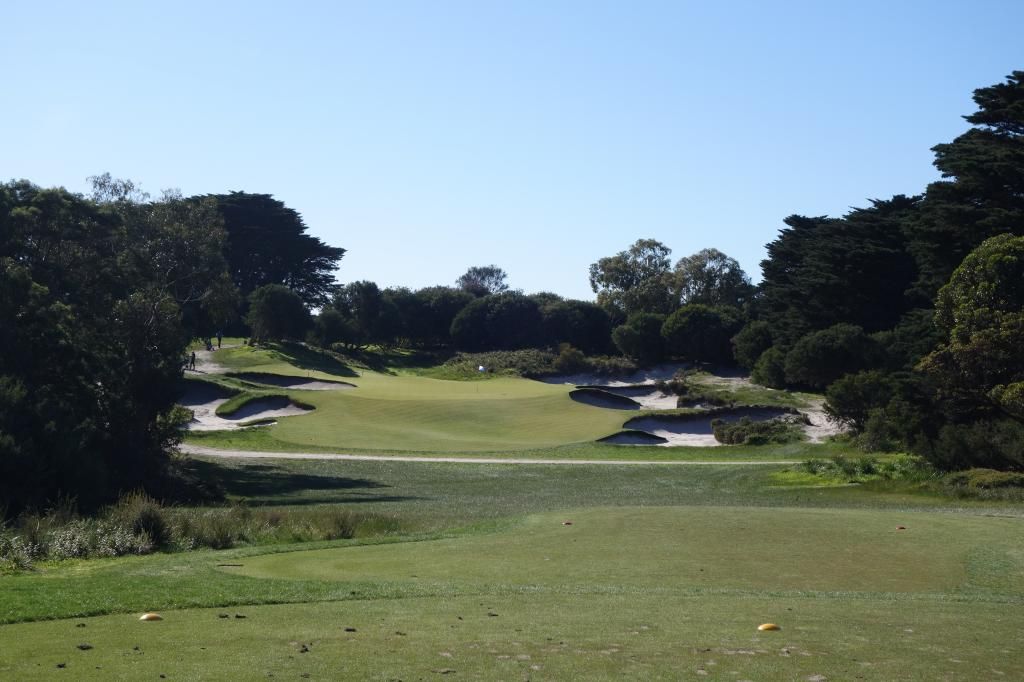
Royal Melbourne (West), Hole 5 (tee, four days later while I was playing the East course and without backlighting)
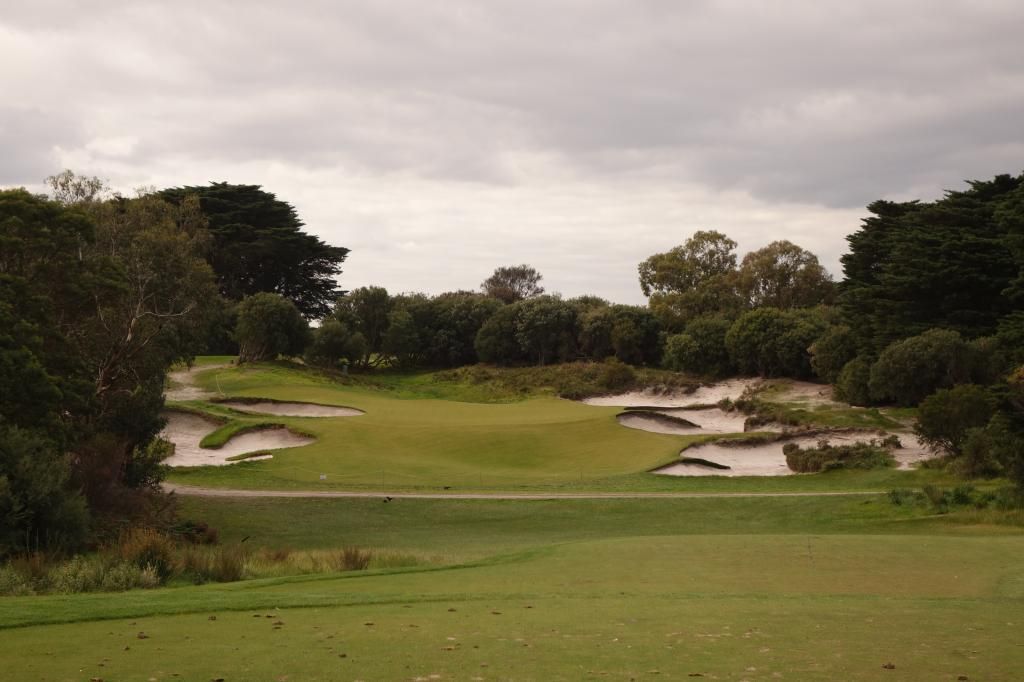
Royal Melbourne (West), Hole 6 (fairway, after the sharp dogleg right)
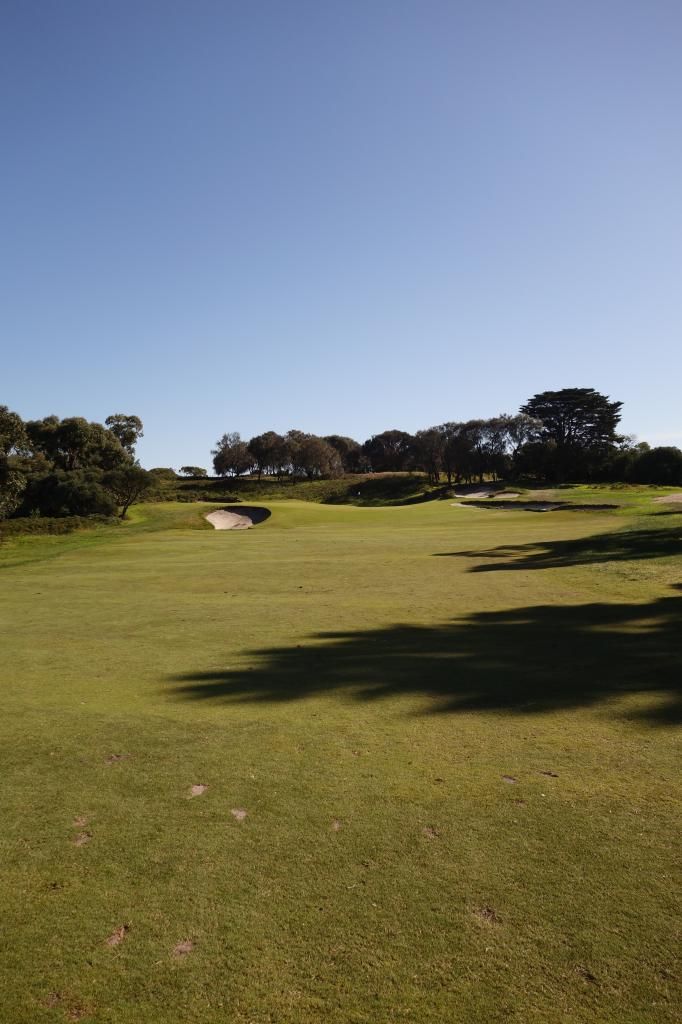
Royal Melbourne (West), Hole 10 (tee) [N.B.: This short par-4--where driving the green (over the bunker) is tempting, but ultimately foolish--has to be in the conversation, together with the long 6th, of the best par-4 in the world.]
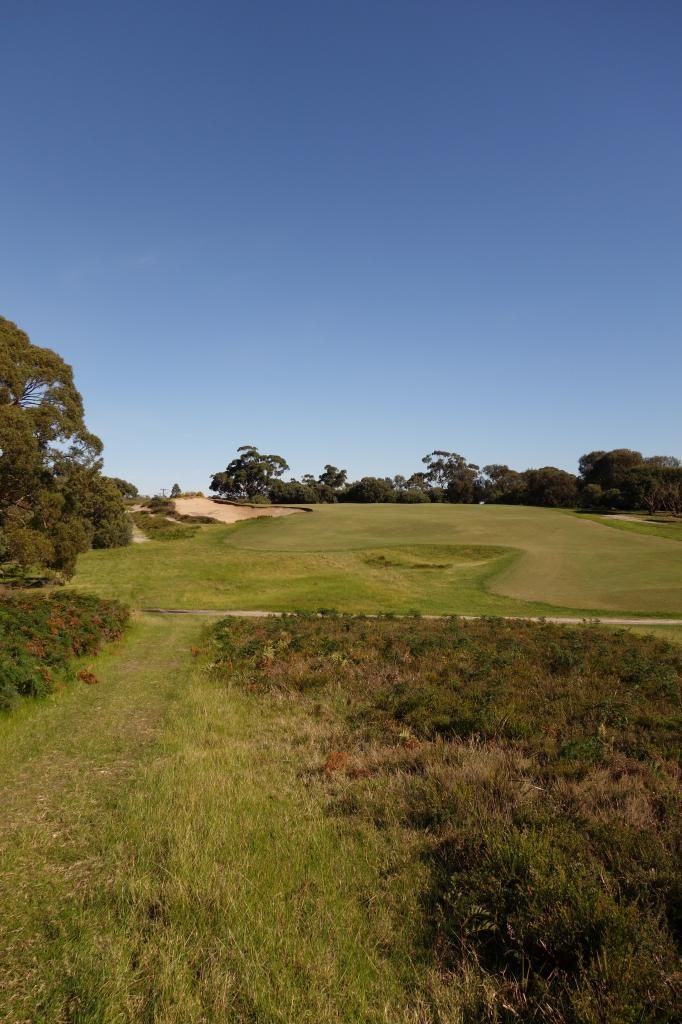
Royal Melbourne (West), Hole 11 (fairway)
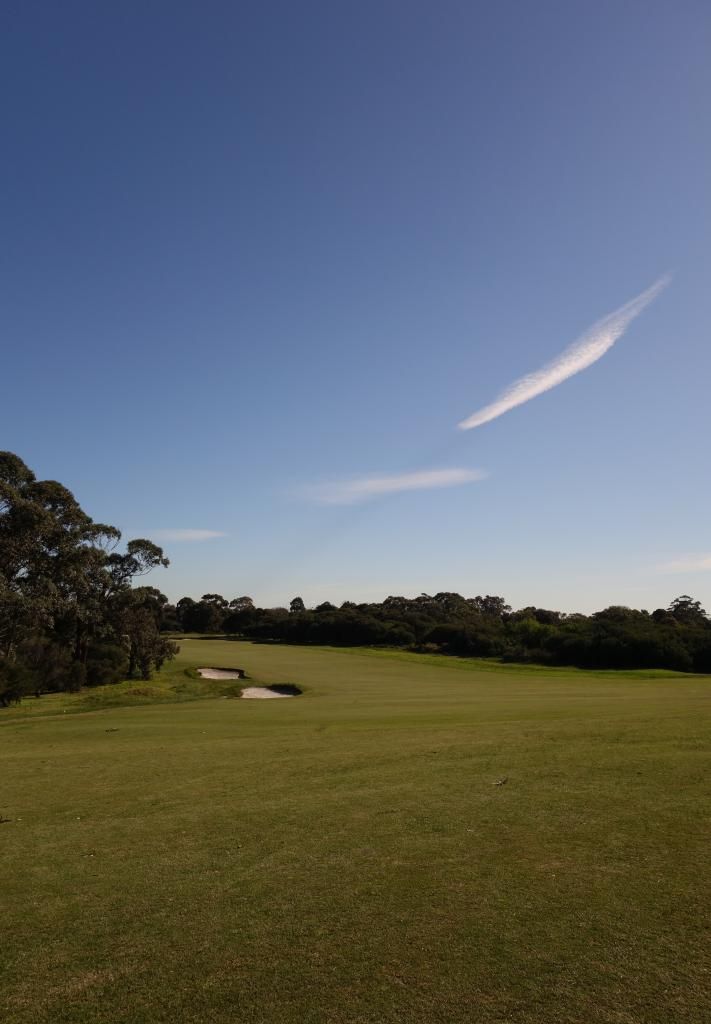
Royal Melbourne (West), Hole 11 (fairway, looking backward, with 11 fairway right, 17 fairway/green left, and fairway bunkers on 18 in the distance on the left) [N.B.: These at once wide-open and defined playing corridors are, perhaps more than the bunkers or the elevation changes, the dominant feature of Royal Melbourne.]
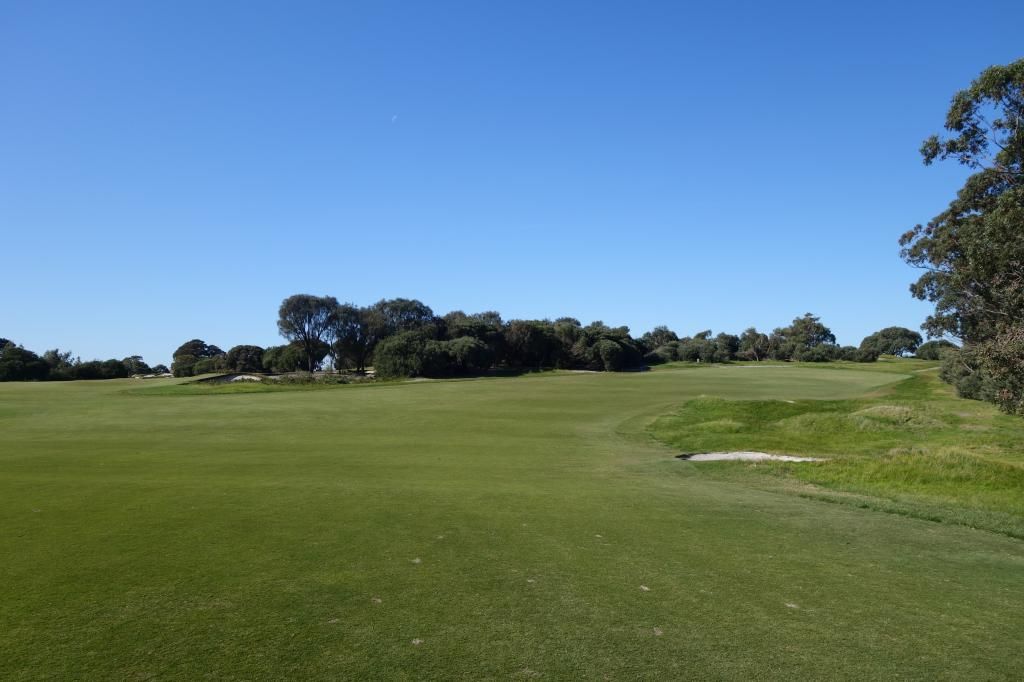
Royal Melbourne (West), Hole 11 (green, looking backward again, with 11 fairway right and 17 fairway left)
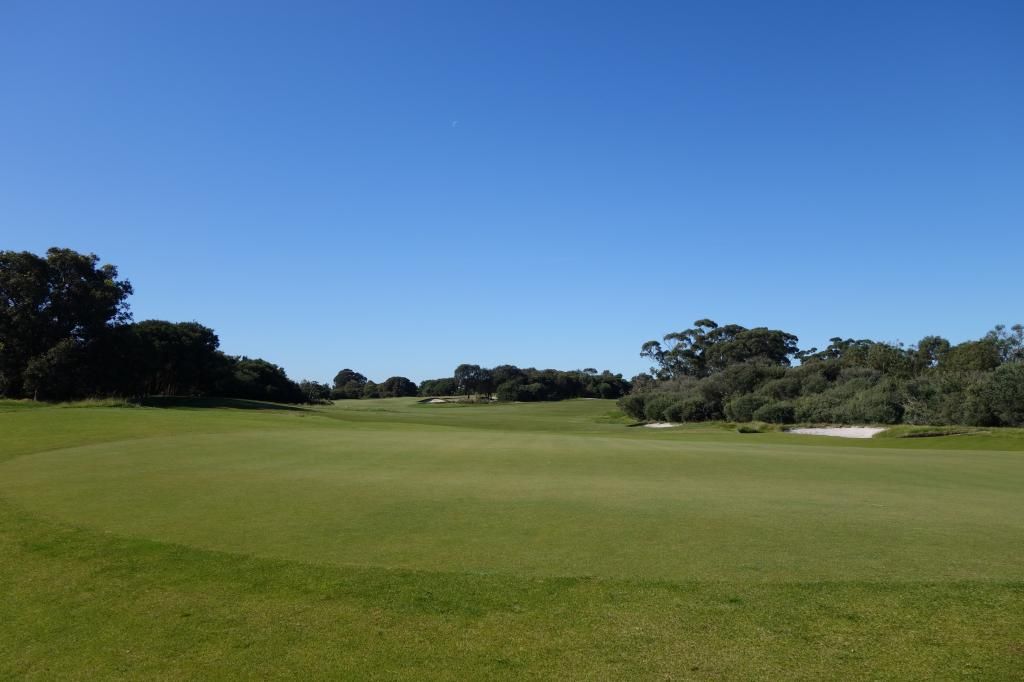
Royal Melbourne (West), Hole 13 (green) [N.B.: When this is the "worst" par-3, you know you're playing an amazing golf course.]
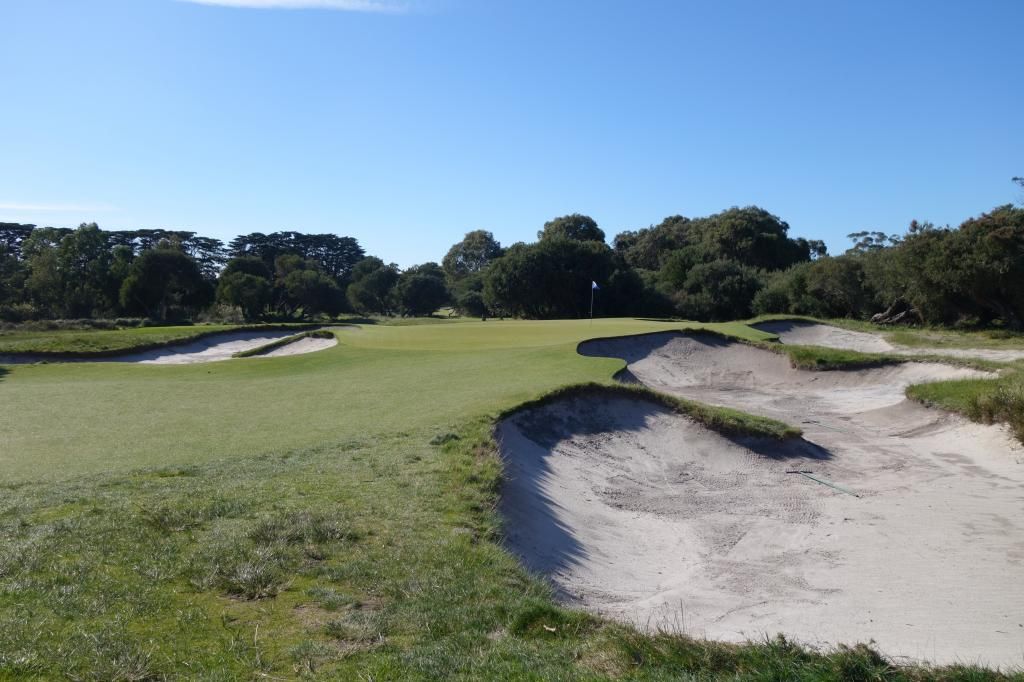
Royal Melbourne (West), Hole 17 (left fairway bunker, with green in the distance on the left; the 11th fairway is to the right)

Royal Melbourne (West), Hole 18 (tee) [N.B.: A brilliant design marries a hard right-to-left tilt in the fairway with a hard left-to-right curve.]
